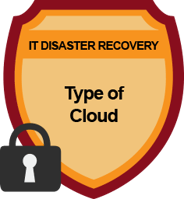 Private Cloud
Private Cloud
The Private Cloud is intended for the single operation of a single company or organisation. It can be hosted internally or externally by the organization or outsourced to a third party.
When done correctly and efficiently, hosting a private cloud can help significantly improve business – but the process by which it is set up could prove to be complicated.
The cloud deployment model requires the organization to reevaluate and repurpose existing resources, as well as require the organization to undergo major virtualization.
Because of this, “virtual” types of vulnerabilities are opened up, and every step of setting up and maintaining a private cloud is, if not carefully worded, a potential security risk waiting to happen (Cloud Computing, 2015).
One advantage of the private cloud, especially for the IT personnel managing it, is complete control over the system while at the same time adhering to the highest security standards (Welsh & Palacio, 2015).
Public Cloud
If a private cloud is, by its namesake, for private use by a single organization, then a public cloud is the exact opposite. Services on a public cloud are delivered and received over an open network that is available for public use.
While cloud services are often cost-effective, public clouds are the only ones that are sometimes free. Regarding IT infrastructure, there are little to no vast differences between how private and public clouds function.
However, security standards may be different. Unlike private clouds, public clouds are non-trusted networks, and most lack the security standards of private clouds (Cloud Computing, 2015).
Community Cloud
As defined here, the community cloud has similarities to private and public clouds. Like a private cloud, it can avoid network bandwidth, security exposures, and legal issues arising from external resources, and its use can be controlled and managed.
Like a public cloud, it makes set-up easy for individual organizations. It provides more efficient use of pooled resources for the community than any members could achieve individually (The Open Group, 2015).
Hybrid Cloud
A hybrid cloud is a mix of two or more clouds (private, community or public) that remain distinct entities but are bound together, offering the benefits of multiple deployment models.
A hybrid cloud can also connect collocation, managed and/or dedicated services with cloud resources (BTL, 2015).
Reference
Goh, M. H. (2016). A Manager's Guide to Implementing Your IT Disaster Recovery Plan. Business Continuity Management Specialist Series (2nd ed.). Singapore: GMH Pte Ltd.
Extracted from "Chapter 4: Project Management: Step 1: Establish the Need for DR Planning"
More Information About IT DR Blended Learning
![Email to Sales Team [BCM Institute]](https://no-cache.hubspot.com/cta/default/3893111/3c53daeb-2836-4843-b0e0-645baee2ab9e.png) To know more about our blended learning program and when the next course is scheduled, feel free to click the icon on the right to contact our course consultant colleagues
To know more about our blended learning program and when the next course is scheduled, feel free to click the icon on the right to contact our course consultant colleagues
They are the BL-DR-3 Blended Learning DR-300 IT Disaster Recovery Implementer and the BL-DR-5 Blended Learning DR-5000 IT Disaster Recovery Expert Implementer.
 |
 |





![Register [BL-DR-3]*](https://no-cache.hubspot.com/cta/default/3893111/15b32c57-3105-4c0c-96fc-92ce68950f81.png)




